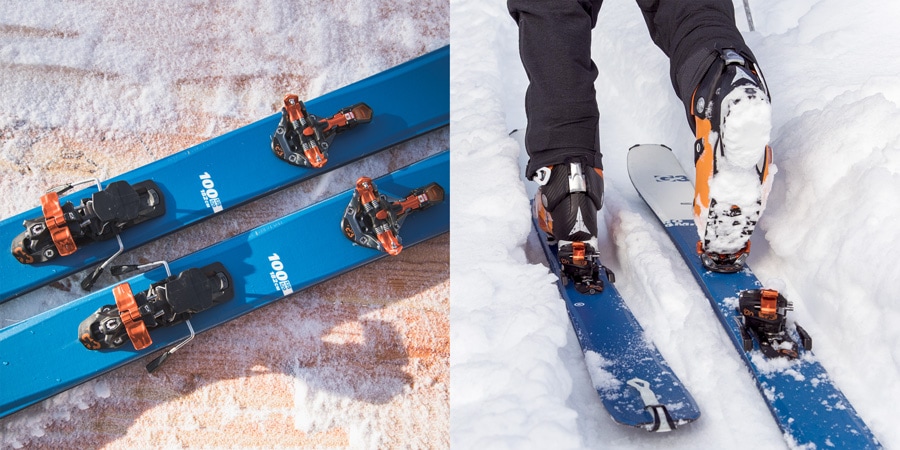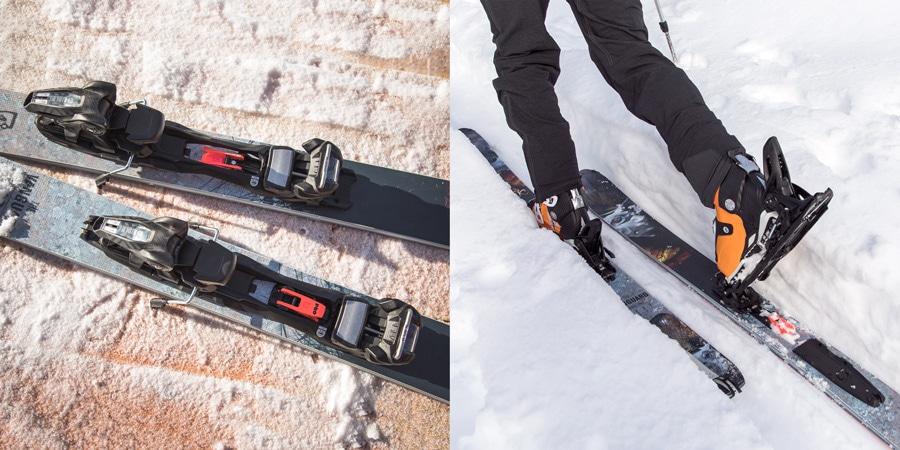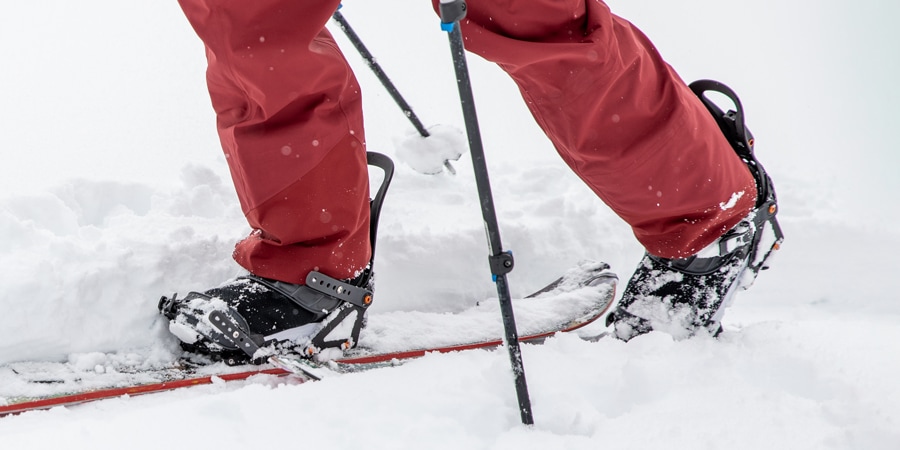To skin or not to skin? Backcountry Bindings
19175.193346913864
Element / Type: Snow / Blog
Created on: July 2 at 4:38 AM
Last updated: July 2 at 4:38 AM
Author:
Photos:
Content:
The technology for backcountry riding has jump leaps and bounds over the years. In this blog, I will highlight the types of backcountry ski and snowboard bindings.
Information resourced from https://www.rei.com/learn/expert-advice/how-to-choose-backcountry-ski-bindings.html and https://www.rei.com/learn/expert-advice/how-to-choose-splitboard-bindings.html
Types of backcountry ski bindings
Tech Bindings

Tech bindings have separate toe and heel pieces, small pins in the toe piece connect to holes (tech inserts) on your boots for uphill travel. Pins in the back of the heel piece lock you into place when you’re ready for downhill skiing. Tech bindings require tech-compatible boots that have tech (pin) inserts, are the lightest binding option because of their minimalist design, and are ideal for skiers doing lots of human-powered touring or uphill climbing who care about weight.
Frame bindings

Frame bindings are more like traditional alpine ski binding with the toe and heel pieces connected by a rail, which comprises the frame. The entire binding lifts up when you’re in touring mode and locks back down in ski mode, providing a feel nearly identical to a traditional downhill binding. Frame bindings are ideal for aggressive or downhill-oriented skiers who want performance and don’t mind extra weight, are compatible with most touring-specific boots as well as downhill ski boots, are a good one-ski setup for those who mostly stick to resorts with occasional laps into the backcountry, can be less efficient for uphill travel due to their heavier weight.
Types of Splitboard Bindings
Soft-Boot Bindings

Soft-boot bindings are what most splitboarders use. Staying true to traditional snowboard binding design, they look and perform a lot like regular snowboard bindings. For downhill riding, the bindings attach firmly across the splitboard. For uphill travel, you reposition the bindings, one going onto each splitboard ski, and attach them such that they can pivot up and down.
Hard-Boot Bindings
Hard-boot bindings are a niche setup preferred by a relatively small number of experienced backcountry riders and mountain guides since their major pro is uphill efficiency. Hard-boot bindings design works with plastic alpine touring ski boots that backcountry skiers use rather than snowboard boots. For going downhill, the bindings have wire toe and heel bales that hold onto the toe and heel welts on plastic ski touring boots. When traveling uphill, you remove the downhill binding components completely (rather than repositioning them like you do with soft-boot bindings) and step into tech-style toe pieces (much like the toe pieces of Dynafit alpine touring bindings) that are mounted on the splitboard skis.


Comments:
Sign in to leave comments
Jerry Beater-Bigs
January 21 at 5:43 PM
Thanks for the info!